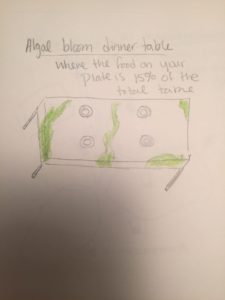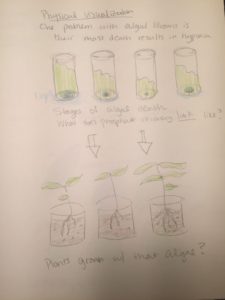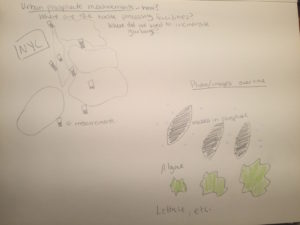Reading “contaminated soil” described as Mel Chin’s “sculpture medium” in To Life! Eco Art in Pursuit of a Sustainable Planet made something click. Of course soil is central to the problem of exponentially increasing phosphorus use, but I hadn’t thought of as a ‘medium’ in itself. I was immediately reminded of the image included in Liu, Tang, & Li’s paper studying plant roots experiencing phosphorus deficiency.

Some ideas
- Micro-materials flow analysis: change the scale to make it personal
- More personal: collecting your own phosphorus. Would Jasmine-fertilizer be sufficient to grow my own food? The Bradford-Hartke et al. article noted issues with ecotoxicity and salinization with the use of untreated urine.
- Designing larger scale interventions: create an easier way to capture and re-use phosphorus from urban waste streams, or from farm run-off. These processes are currently energy-intensive, and struvite (made from recovered phosphate) is still more expensive that mining for phosphate (Roy). Roy also explains, “several researchers have explored the potential for havesting P in the biomass of macrophytes and algae in ecological wastewater treatment systems.” I wonder if this kind of exponential algal growth and subsequent re-capture could be demonstrated?
- What is a P-focused soil sculpture? What does healthy soil look like? What do healthy roots look like? Could I create a planter that shows their growth under different conditions somehow?
I wanted to know what recovering phosphorus from algae looked like
Maybe these ideas could be merged actually–if the food were edible witnessing this process could be different?
I wonder about the potential of using time lapse imagery or measurements?


